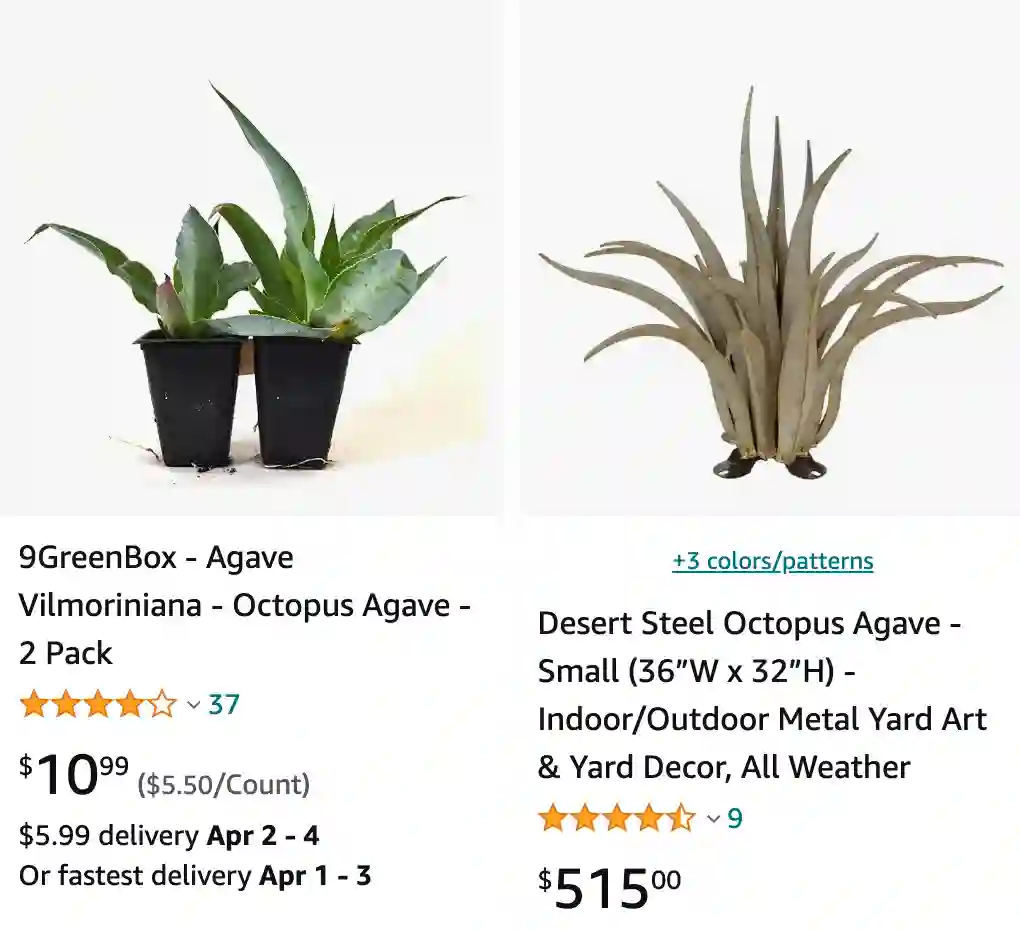
Octopus Agave: A Spiraling Wonder in My Garden
When I first encountered Octopus Agave (Agave Vilmoriniana), I was instantly captivated by its striking, tentacle-like foliage. This unusual plant became a standout feature in my garden, blending elegance and drama with low-maintenance charm. Over the years, I’ve come to appreciate its unique characteristics and versatility. Let me take you on a personal journey with this extraordinary plant.
304 Species in Genus Agave
What Makes Octopus Agave Unique?
Octopus Agave earns its name from its distinctive leaves that curve and twist gracefully, resembling the arms of an octopus. These light green, fleshy leaves can grow up to 4-6 feet long, forming a rosette that spreads up to 5 feet wide. Unlike other agaves with stiff, thorny leaves, this species is surprisingly soft and free of sharp spines, making it garden-friendly even in high-traffic areas.
The plant’s adaptability to various climates is remarkable. Native to the semi-arid regions of Mexico, Octopus Agave thrives in hot, sunny conditions but is surprisingly tolerant of cooler temperatures down to 25°F. For me, its drought-resistance and minimal water needs make it a hassle-free addition to my collection.
How to care for Octopus Agave?
Caring for an Octopus Agave involves ensuring it gets plenty of sunlight, ideally full sun, but it can tolerate partial shade. I remember placing mine in a spot where it gets direct sunlight for most of the day, which has helped it thrive. The soil should be well-draining to prevent root rot, and I use a cactus or succulent mix to ensure proper drainage. Occasionally, I’ll add some gravel or sand to the soil for extra measure. It’s pretty drought-tolerant, so I let the soil dry out completely between waterings, which seems to keep it happy.
Where to buy Octopus Agave?
Finding Octopus Agave to buy wasn’t too difficult. I started by checking local nurseries and garden centers, as they often have a variety of succulents and agaves. Eventually, I found a healthy one at a nursery that specializes in desert plants. Online options are also available, but I prefer seeing the plant in person to check its health before buying. Some friends have had success ordering from reputable online succulent stores, which can be a good alternative if local options are limited.
Do Octopus Agave die after they bloom?
Yes, Octopus Agave do die after they bloom. This was a bit of a surprise to me when I first learned about it. The blooming is a spectacular event, with a tall stalk of flowers, but it’s also the plant’s final act. After it blooms, the main plant slowly dies off. However, the process isn’t all sad because it usually leaves behind plenty of pups, or offsets, that can be harvested and grown into new plants.
How to harvest pups from Octopus Agave?
Harvesting pups from my Octopus Agave is one of my favorite gardening activities. I wait until the pups are a decent size, usually a few inches tall, and have some roots of their own. Using a sharp, clean knife, I carefully cut them away from the mother plant, making sure to get as many roots as possible. Then, I let the cut ends dry out for a day or two to prevent rot before planting them in their own pots with the same well-draining soil mix I use for the adult plants.
How much water does an Octopus Agave plant need?
When it comes to watering, my Octopus Agave needs very little. During the warmer months, I water it every two to three weeks, making sure the soil dries out completely between waterings. In the cooler months, I cut back even more, sometimes only watering once a month. Overwatering is a common mistake, and I’ve learned to resist the urge to water too often, which has kept my agave healthy.
How to propagate Octopus Agave?
Propagating Octopus Agave is fairly straightforward, thanks to the pups it produces. Once I’ve harvested the pups and let them callous over, I plant them in a small pot with well-draining soil. I water them sparingly, just enough to keep the soil lightly moist until they establish roots. It’s exciting to see them start growing on their own, and I’ve been able to propagate several new plants this way.
Why are my Octopus Agave yellow?
Seeing my Octopus Agave turn yellow was concerning, and I had to troubleshoot a bit to figure out the cause. In my experience, yellowing leaves can be a sign of overwatering or poor drainage, which can lead to root rot. I checked the soil moisture and drainage, adjusted my watering schedule, and removed any severely affected leaves. Sometimes, too much direct sunlight or a sudden change in light conditions can also cause yellowing, so I made sure the plant was not getting scorched during the hottest part of the day. These adjustments have helped restore the plant’s vibrant color.
If i die, water my plants!


